How to Prepare Your Chimney for Portland’s Rainy Season: Key Steps for a Leak-Free Home
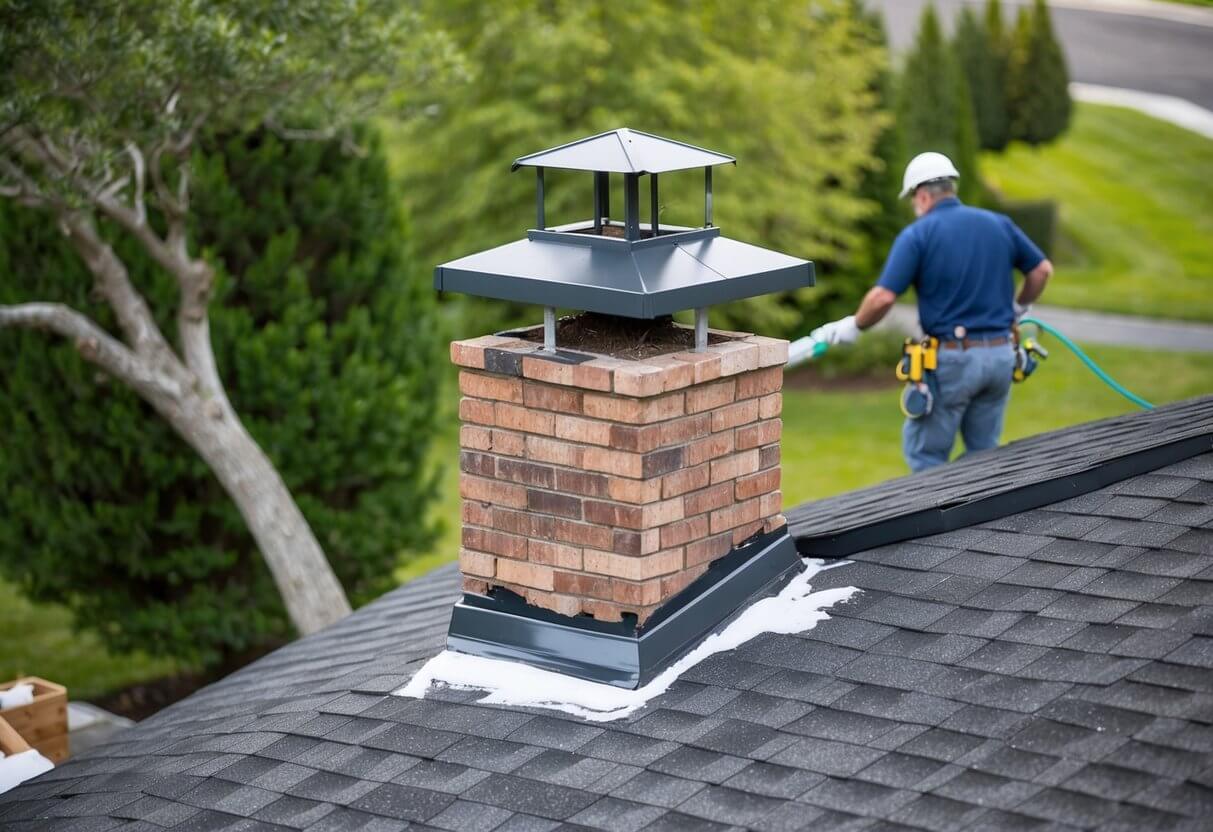
How to Prepare Your Chimney for Portland’s Rainy Season: Key Steps for a Leak-Free Home
Portland’s rainy season brings unique challenges for homeowners. Chimneys are especially vulnerable to water damage during this time. Taking steps to prepare your chimney can help prevent costly repairs and ensure your fireplace works safely all winter long.
Regular chimney maintenance is key to protecting your home from water damage and keeping your fireplace working well. Getting your chimney ready for the rainy months involves several important tasks. These range from simple inspections to more complex repairs. With some planning and care, Portland homeowners can keep their chimneys in top shape no matter how much rain falls.
1. Clean the Chimney Flue
Cleaning the chimney flue is a crucial step in preparing for Portland’s rainy season. A clean flue helps prevent chimney fires and ensures proper ventilation.
Start by inspecting the chimney from both the top and bottom using a flashlight. Look for any buildup of creosote, a flammable substance that can accumulate over time.
Next, gather the necessary tools. Use a metal bristle brush for clay flue liners or a plastic bristle brush for metal liners. Make sure to have enough extension rods to reach the entire height of the chimney.
Begin the cleaning process from the top of the chimney, working your way down. Remove the chimney cap and scrub thoroughly, moving the brush up and down to remove all creosote and debris.
Pay close attention to the thickness of the creosote. If it’s 1/8-inch thick, schedule a cleaning soon. If it’s 1/4-inch or more, do not use the fireplace until it’s cleaned professionally.
After cleaning, vacuum the fireplace area to remove any soot or residue that may have fallen during the process. This final step ensures a clean and safe chimney for the rainy season ahead.
2. Inspect the Chimney Cap
A chimney cap is a crucial part of your chimney system. It keeps rain, debris, and animals out of your chimney. Before the rainy season starts, take a close look at your cap.
Check if the cap is securely attached to the chimney. Look for any signs of rust, cracks, or other damage. A damaged cap won’t protect your chimney effectively.
Make sure the cap’s mesh is intact. This mesh stops sparks from escaping and keeps critters out. If it’s torn or missing, it needs to be fixed or replaced.
The cap should slope away from the flue. This helps water run off instead of pooling on top. If your cap is flat, consider replacing it with a sloped one.
If you don’t have a chimney cap, now is the time to install one. It’s an easy way to prevent many common chimney problems during Portland’s rainy season.
If you’re not comfortable inspecting the cap yourself, hire a professional. They can safely check and fix any issues with your chimney cap.
3. Check for Water Damage
Water damage is a serious concern for chimneys in Portland’s rainy climate. Homeowners should look for signs of moisture intrusion regularly.
Stains on walls or ceilings near the chimney are clear indicators of water damage. These may appear as brown or yellow discolorations.
Peeling wallpaper or paint around the chimney area can also signal moisture problems. This occurs when water seeps through the chimney structure.
Dampness or musty odors in the fireplace suggest water is entering the chimney. These smells often become more noticeable during or after rain.
Cracked or damaged bricks on the exterior of the chimney can allow water to penetrate. Inspect the brickwork carefully for any visible issues.
Check the chimney crown for cracks or deterioration. A damaged crown can let water seep into the chimney structure, causing extensive damage over time.
If any of these signs are present, it’s crucial to address them promptly. Professional chimney inspections can help identify water damage issues before they become severe.
5. Seal the Chimney Crown
The chimney crown is a vital part of your chimney system. It sits at the top of the chimney and helps protect the structure from water damage. Sealing the chimney crown is an important step in preparing for Portland’s rainy season.
A properly sealed crown prevents water from seeping into the bricks and mortar below. This can help avoid costly repairs down the line. Homeowners should inspect their chimney crown regularly for cracks or signs of wear.
If small cracks are present, they can often be sealed with a flexible, waterproof sealant. For larger cracks or more extensive damage, professional repair may be necessary.
Crown seal services can extend the lifespan of your chimney. They create a protective barrier against rain, snow, and other moisture. This is especially important in Portland’s wet climate.
Before applying any sealant, the crown should be thoroughly cleaned. Any loose debris or mortar should be removed. This ensures the sealant adheres properly and provides effective protection.
6. Test the Damper Functionality
The chimney damper plays a crucial role in keeping out rain and cold air during Portland’s wet season. It’s important to check its operation before the rains begin.
Open and close the damper several times to ensure smooth movement. A stuck or rusty damper can lead to problems later.
Listen for any unusual sounds when operating the damper. Squeaking or grinding noises may indicate the need for lubrication or repairs.
Check that the damper creates a tight seal when closed. This helps prevent drafts and keeps warm air inside your home.
If you notice any issues with your damper, it’s best to call a professional chimney sweep for an inspection. They can identify and fix problems before they become serious.
A properly functioning damper is essential for chimney efficiency and safety. It helps control airflow and prevents water damage during rainy periods.
Regular testing and maintenance of your chimney damper can save you money on heating costs and prevent potential water damage to your home.
7. Clear Out Debris Around the Chimney
Keeping the area around the chimney clear of debris is crucial for proper function and safety. Trees and plants near the chimney can drop leaves, twigs, and other organic matter onto the roof and into the chimney.
Regular cleaning of the roof area surrounding the chimney helps prevent blockages. Homeowners should remove any fallen branches, leaves, or other debris that accumulate on the roof near the chimney.
It’s important to trim tree branches that hang over or near the chimney. This reduces the amount of debris that can fall onto the roof or into the chimney opening.
Clearing gutters and downspouts is also essential. Clogged gutters can cause water to back up and potentially seep into the chimney structure, leading to damage over time.
For safety, it’s best to inspect and clean the roof area from the ground using binoculars. If access to the roof is necessary, use proper safety equipment and consider hiring a professional for this task.
Regular maintenance of the area around the chimney helps ensure proper airflow and reduces the risk of chimney fires or other issues during the rainy season.
8. Schedule a Professional Inspection
Getting a professional chimney inspection is crucial before Portland’s rainy season starts. Experts can spot issues that homeowners might miss.
A thorough check helps prevent water damage and ensures the chimney works safely. Inspectors look for cracks, loose bricks, and damaged liners.
They also check for creosote buildup and blockages that could cause fires or smoke problems. These issues are harder to spot without special tools.
Most chimney professionals use video scanners to examine the entire flue. This method finds hidden damage that might let water in during heavy rains.
Scheduling an inspection early gives homeowners time to make repairs before wet weather arrives. It’s best to book appointments in late summer or early fall.
Regular inspections keep chimneys working well and help avoid costly fixes later. They also give peace of mind during stormy Portland winters.
9. Repair Any Cracks or Gaps
Homeowners should check their chimneys for cracks and gaps before the rainy season starts. These openings can let water in, causing damage over time.
Small cracks can be fixed with caulk or mortar. Homeowners can apply a water-repellent coating to the entire chimney surface for extra protection.
For bigger problems, it’s best to call a professional. Chimney experts can find loose cracks or gaps that might cause leaks. They have the right tools and know-how to fix these issues safely.
After fixing cracks, it’s important to waterproof the repair area. This helps the fix last longer. Homeowners can use a sprayer to apply the waterproofing product.
Regular checks are key. If new cracks form or old ones get bigger, it’s time to call for help. Quick action can prevent costly repairs later on.
10. Clean the Fireplace
A clean fireplace is key to preparing for Portland’s rainy season. Start by removing all ash and debris from the firebox. Use a shovel and broom to sweep out loose materials.
Scrub the firebox walls with a wire brush to remove soot and creosote buildup. This helps prevent chimney fires and improves efficiency.
Wipe down the fireplace surround and hearth with a damp cloth. For brick or stone, use a specialized cleaner to remove stains and restore appearance.
Don’t forget to clean the fireplace glass doors. A mixture of vinegar and water works well for removing soot and grime.
Check the damper for proper operation. Clean off any rust or debris that may hinder its movement.
Lastly, inspect the firebox for any cracks or damage. Small issues can be repaired with refractory cement, but larger problems may require professional attention.
A clean fireplace not only looks better but also functions more safely and efficiently during Portland’s wet months.
Understanding Portland’s Rainy Season
Portland’s rainy season brings unique challenges for homeowners, especially when it comes to chimney maintenance. Proper preparation is key to avoiding water damage and ensuring your fireplace functions safely all winter long.
Climate Overview
Portland experiences a cool, damp climate for much of the year. The rainy season typically starts in September and can last through June.
During this time, the city sees frequent light rain and drizzle rather than heavy downpours. Average annual rainfall is around 36 inches.
Temperatures remain mild, rarely dropping below freezing. This combination of persistent moisture and moderate temperatures creates ideal conditions for moss and algae growth on roofs and chimneys.
Common Issues with Chimneys in Rain
Chimneys face several threats during Portland’s rainy months. Water infiltration is a major concern, often occurring through cracks in the masonry or damaged chimney caps.
Left unchecked, moisture can lead to:
- Rust on metal components
- Deterioration of the flue lining
- Brick and mortar damage
- Mold growth inside the chimney
Structural damage may occur if water freezes and expands within small cracks. This can worsen existing issues and compromise chimney integrity.
Creosote, a byproduct of wood burning, absorbs moisture and becomes more corrosive. This accelerates damage to the chimney’s interior.
Chimney Maintenance Tips
Proper chimney maintenance is key to keeping your home safe and dry during Portland’s rainy season. Taking care of your chimney helps prevent water damage and ensures it functions well.
Waterproofing Your Chimney
Waterproofing your chimney is crucial to protect it from rain damage. Apply a waterproof sealant to the exterior of the chimney. This creates a barrier against moisture.
Choose a breathable sealant that allows vapors to escape. Non-breathable sealants can trap moisture and cause brick damage.
Apply the sealant on a dry day when no rain is expected for 24 hours. Clean the chimney surface thoroughly before application.
Pay extra attention to the crown, which is most exposed to rain. Ensure complete coverage of all brick and mortar joints.
Reapply the sealant every few years to maintain protection. Check the manufacturer’s instructions for reapplication timing.
Inspecting for Damage
Regular chimney inspections can catch issues before they become major problems. Look for cracks in the mortar or bricks. These can let water seep in and cause damage.
Check the chimney cap and flashing for rust or gaps. A damaged cap or flashing can allow water to enter the chimney.
Inspect the crown for cracks or chips. A damaged crown can lead to water penetration and freeze-thaw damage.
Look inside the fireplace for signs of water stains or damage. These can indicate a leak in the chimney structure.
Consider hiring a professional for a thorough inspection. They can spot issues you might miss and provide expert advice.
Frequently Asked Questions
Proper chimney maintenance is crucial for protecting your home during Portland’s rainy season. Here are answers to common questions about waterproofing, leak prevention, and essential upkeep.
What steps should be taken to ensure a chimney is waterproofed for the rainy season?
To waterproof a chimney, start by inspecting the crown and cap. Apply a waterproof sealant to the crown if needed. Check the flashing where the chimney meets the roof and reseal if necessary.
Install a quality chimney cap if one is not present. This prevents water from entering directly down the flue.
Can a chimney leak be prevented and what are the signs?
Chimney leaks can often be prevented with regular maintenance. Signs of a leak include water stains on walls or ceilings near the chimney, damp odors, or visible water in the firebox.
Other indicators are loose or missing bricks, cracks in the mortar, or a deteriorating crown. Address these issues promptly to prevent water damage.
What is the best method to install a rain cap on a chimney?
To install a rain cap, measure the flue opening to ensure a proper fit. Choose a cap made of durable materials like stainless steel or copper.
Secure the cap to the flue liner or crown using appropriate fasteners. If unsure, it’s best to hire a professional to ensure correct installation.
How frequently should chimney maintenance be performed to prevent water damage?
Chimney maintenance should be performed at least once a year, ideally before the rainy season begins. This includes a thorough inspection and cleaning.
For homes in Portland’s damp climate, twice-yearly inspections may be advisable. This helps catch potential issues early and prevents costly water damage.
Are there specific materials recommended for sealing a chimney before rain?
For sealing chimneys, use products specifically designed for masonry and high-heat applications. Silicone-based sealants work well for flashing and small cracks.
For the chimney crown, a flexible crown sealer is recommended. These materials expand and contract with temperature changes, maintaining a watertight seal.

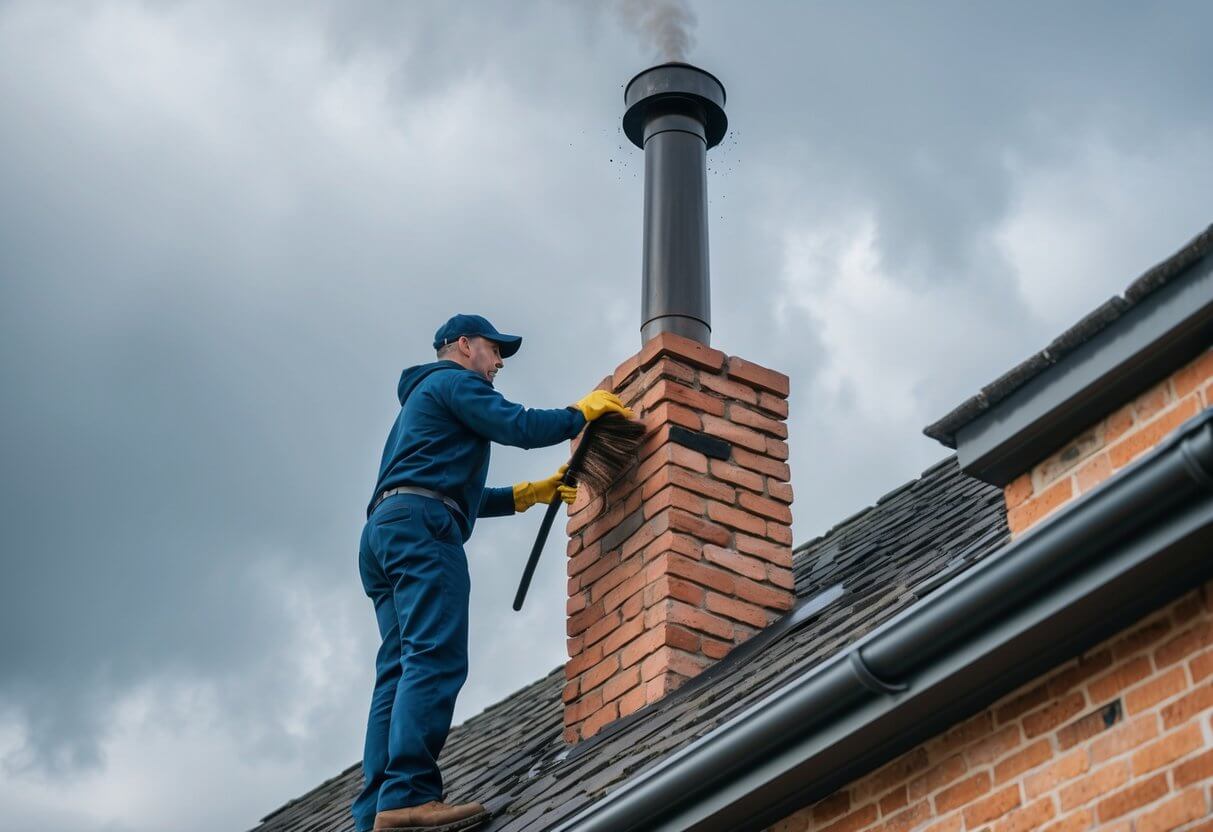
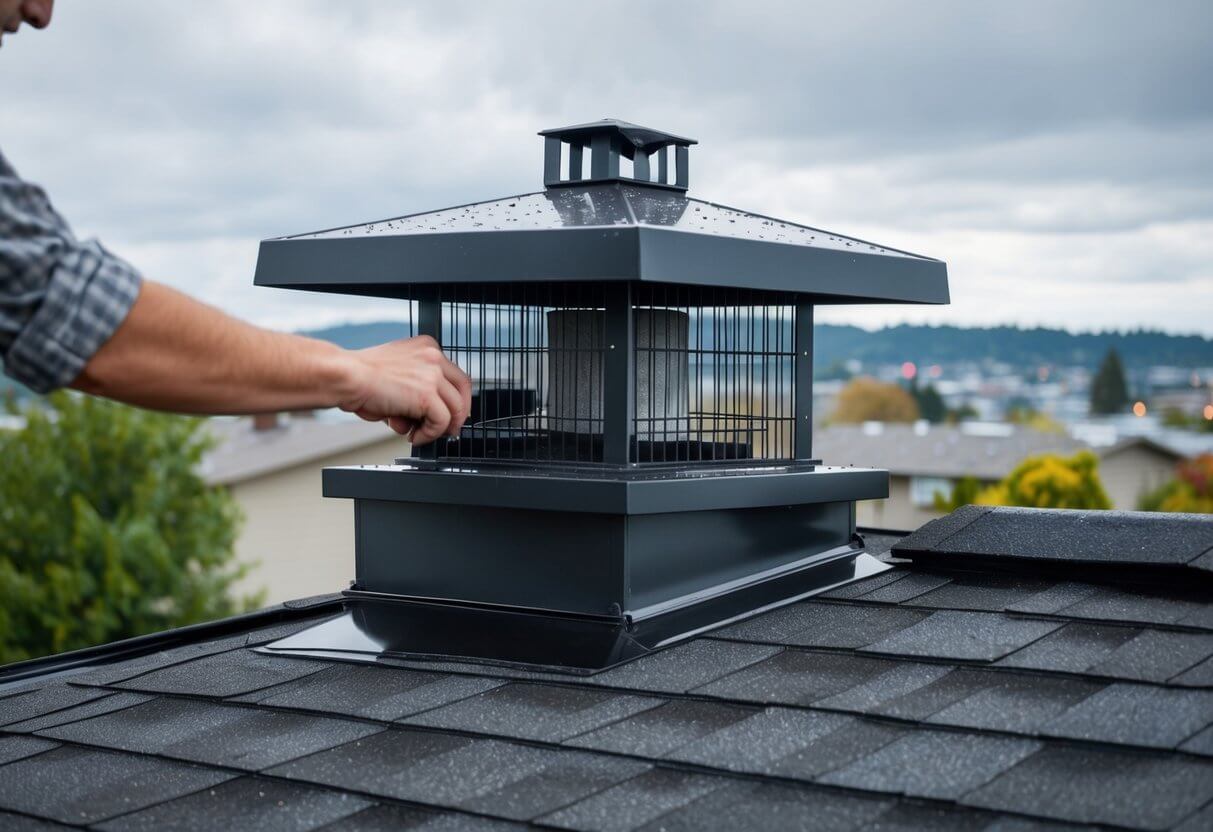
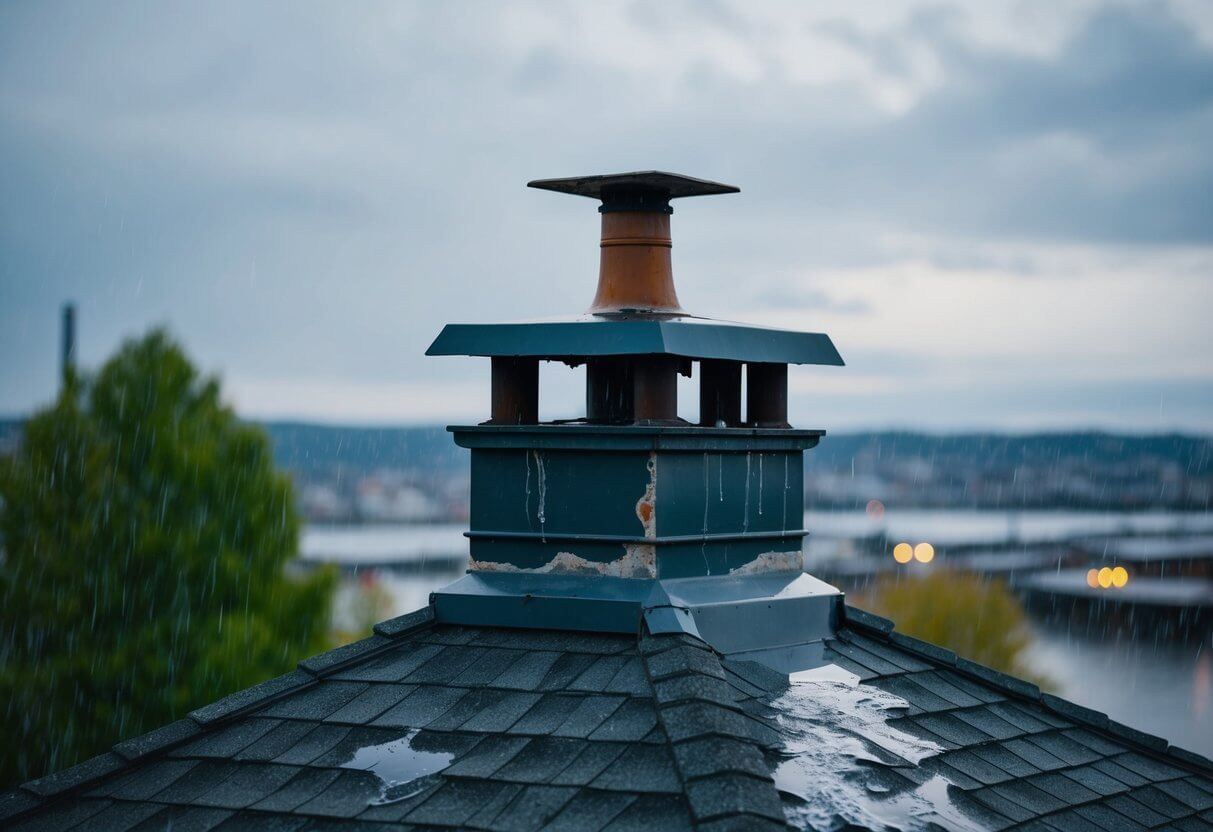
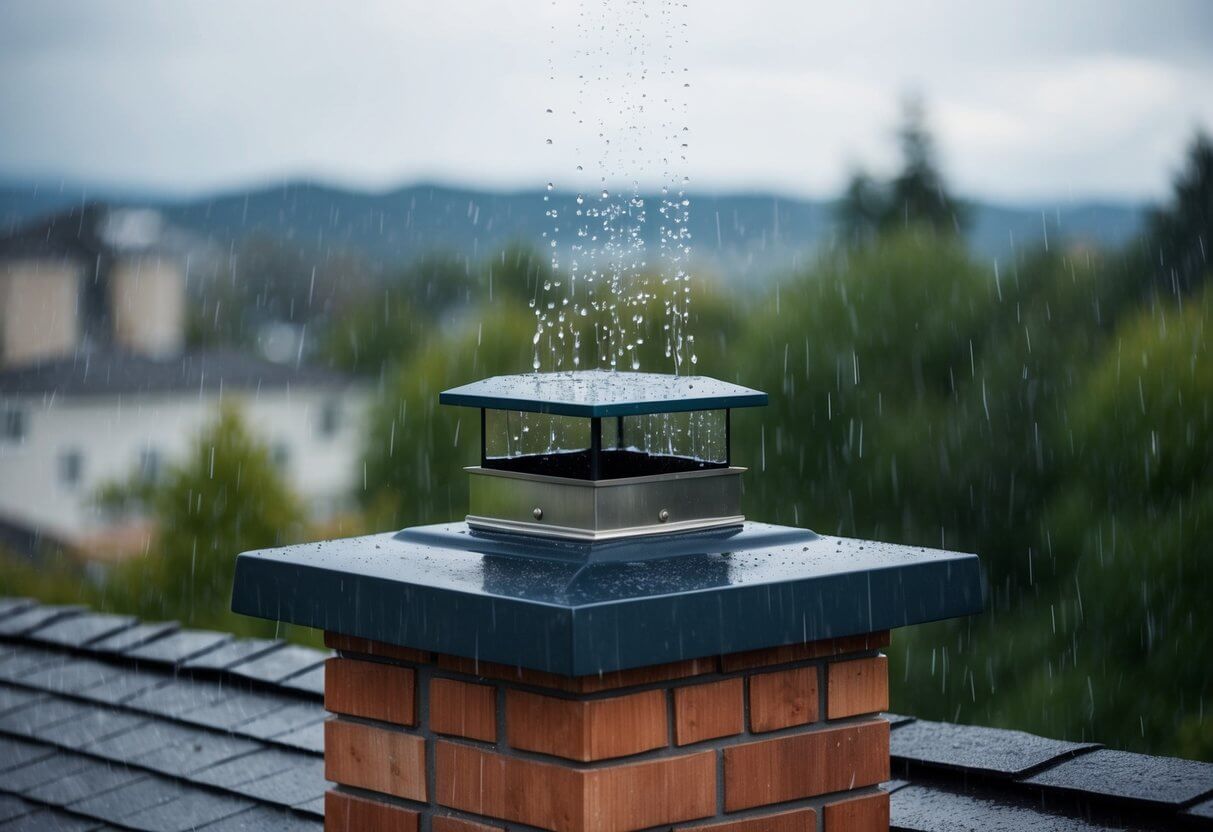

I am really inspired with your writing abilities as smartly as with the format on your blog. Is this a paid theme or did you modify it yourself? Anyway keep up the nice high quality writing, it is rare to see a great blog like this one nowadays!
I don’t think the title of your article matches the content lol. Just kidding, mainly because I had some doubts after reading the article.
https://t.me/s/TgGo1WIN/17
Официальный Telegram канал 1win Casinо. Казинo и ставки от 1вин. Фриспины, актуальное зеркало официального сайта 1 win. Регистрируйся в ван вин, соверши вход в один вин, получай бонус используя промокод и начните играть на реальные деньги.
https://t.me/s/Official_1win_kanal/1931
I don’t think the title of your article matches the content lol. Just kidding, mainly because I had some doubts after reading the article.
**mindvault**
mindvault is a premium cognitive support formula created for adults 45+. It’s thoughtfully designed to help maintain clear thinking
**mind vault**
mind vault is a premium cognitive support formula created for adults 45+. It’s thoughtfully designed to help maintain clear thinking
**prostadine**
prostadine is a next-generation prostate support formula designed to help maintain, restore, and enhance optimal male prostate performance.
**sugarmute**
sugarmute is a science-guided nutritional supplement created to help maintain balanced blood sugar while supporting steady energy and mental clarity.
**gl pro**
gl pro is a natural dietary supplement designed to promote balanced blood sugar levels and curb sugar cravings.
**mitolyn**
mitolyn a nature-inspired supplement crafted to elevate metabolic activity and support sustainable weight management.
**zencortex**
zencortex contains only the natural ingredients that are effective in supporting incredible hearing naturally.
**prodentim**
prodentim an advanced probiotic formulation designed to support exceptional oral hygiene while fortifying teeth and gums.
**vitta burn**
vitta burn is a liquid dietary supplement formulated to support healthy weight reduction by increasing metabolic rate, reducing hunger, and promoting fat loss.
**yu sleep**
yusleep is a gentle, nano-enhanced nightly blend designed to help you drift off quickly, stay asleep longer, and wake feeling clear.
**synaptigen**
synaptigen is a next-generation brain support supplement that blends natural nootropics, adaptogens
**nitric boost**
nitric boost is a dietary formula crafted to enhance vitality and promote overall well-being.
**glucore**
glucore is a nutritional supplement that is given to patients daily to assist in maintaining healthy blood sugar and metabolic rates.
**wildgut**
wildgutis a precision-crafted nutritional blend designed to nurture your dog’s digestive tract.
**pinealxt**
pinealxt is a revolutionary supplement that promotes proper pineal gland function and energy levels to support healthy body function.
**energeia**
energeia is the first and only recipe that targets the root cause of stubborn belly fat and Deadly visceral fat.
**boostaro**
boostaro is a specially crafted dietary supplement for men who want to elevate their overall health and vitality.
**prostabliss**
prostabliss is a carefully developed dietary formula aimed at nurturing prostate vitality and improving urinary comfort.
**breathe**
breathe is a plant-powered tincture crafted to promote lung performance and enhance your breathing quality.
**potent stream**
potent stream is engineered to promote prostate well-being by counteracting the residue that can build up from hard-water minerals within the urinary tract.
**hepato burn**
hepato burn is a premium nutritional formula designed to enhance liver function, boost metabolism, and support natural fat breakdown.
**hepatoburn**
hepatoburn is a potent, plant-based formula created to promote optimal liver performance and naturally stimulate fat-burning mechanisms.
**cellufend**
cellufend is a natural supplement developed to support balanced blood sugar levels through a blend of botanical extracts and essential nutrients.
**prodentim**
prodentim is a forward-thinking oral wellness blend crafted to nurture and maintain a balanced mouth microbiome.
**flowforce max**
flowforce max delivers a forward-thinking, plant-focused way to support prostate health—while also helping maintain everyday energy, libido, and overall vitality.
**revitag**
revitag is a daily skin-support formula created to promote a healthy complexion and visibly diminish the appearance of skin tags.
**neuro genica**
neuro genica is a dietary supplement formulated to support nerve health and ease discomfort associated with neuropathy.
**sleeplean**
sleeplean is a US-trusted, naturally focused nighttime support formula that helps your body burn fat while you rest.
**memorylift**
memorylift is an innovative dietary formula designed to naturally nurture brain wellness and sharpen cognitive performance.
Heard about mu88app. Apparently, their mobile app is pretty good. Makes betting on the go super easy. If you’re into mobile betting, give it a shot. Download it from mu88app!
Your point of view caught my eye and was very interesting. Thanks. I have a question for you. https://accounts.binance.com/pl/register-person?ref=UM6SMJM3
Can you be more specific about the content of your article? After reading it, I still have some doubts. Hope you can help me.
Hey, tried XosoTaiLoc the other day. It’s got a bunch of different lottery options I haven’t seen before. Pretty interesting. Definitely worth checking out and seeing if they’ve got something you like. Here’s the link xosotailoc!
Anyone been watching the live games on live8kbet? Quality streaming? Fast payouts if you win? Live action is where it’s at! live8kbet
gi88, huh? The name’s catchy. Hoping the site lives up to the name. Ease of use is key for me. Anyone have experience? Check it out: gi88
For those in the North, minhngocmb looks like a good resource for checking your lottery results. Good luck lads, hope you hit the jackpot!
Your article helped me a lot, is there any more related content? Thanks!
Can you be more specific about the content of your article? After reading it, I still have some doubts. Hope you can help me. https://www.binance.info/bg/register?ref=V2H9AFPY
https://www.bls.gov/bls/exit_BLS.htm?url=https://www.vocations.ch/wp-content/pages/?code_promo_melbet_bonus.html
Heard about th7777, decided to give it a go. It’s pretty standard, nothing groundbreaking, but also nothing terrible. They have a decent range of games. I managed to win a small amount playing slots. Customer service was responsive when I had a question. It’s alright, you know?